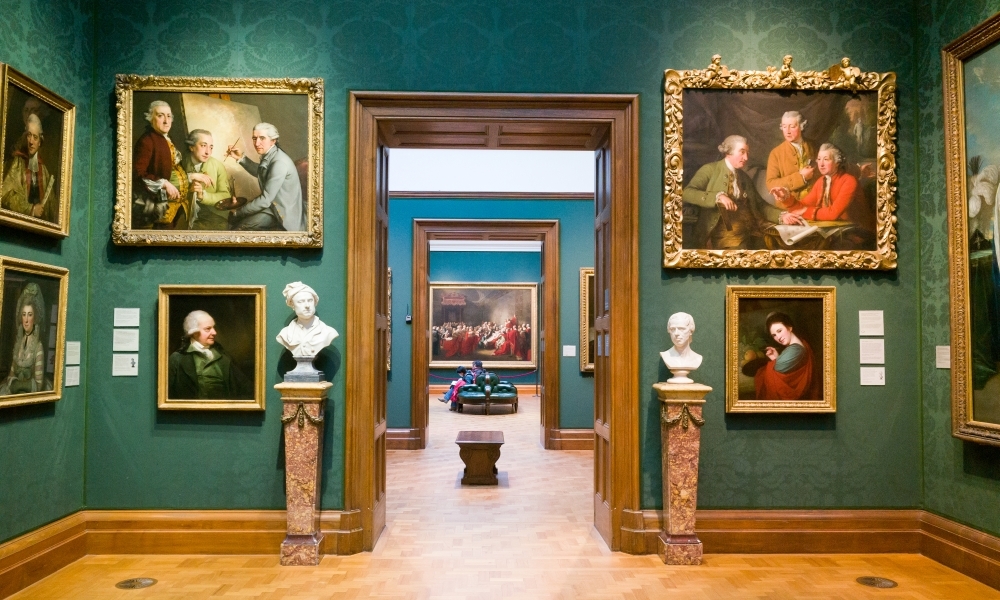Dr Karen Maras, a senior lecturer at the University of New South Wales and specialist in visual arts education, has been presenting on the opening day of ACER’s Research Conference 2021. In this Q&A with Teacher she talks about learning progressions in visual arts, and shares some examples of how students’ conceptions of art change with age.
Your Research Conference presentation – This time without ‘feeling’: Children’s intuitive theories of art as a logical basis for learning progression in visual arts – focused on mapping student progress in art. At a primary level, it’s likely that students won’t be taught by a specialist teacher. How important is it for teachers, particularly non-specialists, to have these kinds of learning progressions as a support?
A key part of teaching art is understanding how students’ ideas about art are organised conceptually. A progression pathway that is based on the gradual acquisition of core art concepts of artist, artwork, audience and the world represented, or subject matter, provides starting points for teachers to link into students’ own theories of art when investigating artworld phenomena, when making art, and interpreting its meaning.
So, for non-specialist and specialist teachers alike understanding how students represent and link these concepts together in what they do and say when they engage in art helps to understand how students conceptualise these big ideas in art and how these big ideas can be extended in the classroom.
From my experience teaching primary pre-service teachers, I know that their experience of art is typically limited to doing art in junior high school. This means they arrive in teacher education programs feeling nervous about how to teach art, often thinking that they need artistic talent themselves or some kind of special knowledge. However, once pre-service and in-service primary teachers for that matter learn about the core concepts of art and how students gradually learn to apply them in art, they quickly start to realise that art understanding has a logical structure that provides a basis for planning, teach and learning. In fact, they also realise that the core concepts of art are implicit to their own theories of art.
Having said that, with such limited time in teacher preparation programs, there is still a great need for pre-service teachers to learn more about artmaking techniques and practices – experience that is complementary to this conceptual approach to understanding how learning in art is structured.
In a subject area like mathematics, for example, students can understand a concept; then they can take that learning a step further by applying what they know and understand in a different situation. Is it the same kind of progression in visual arts?
As in maths, students in visual arts do engage concepts and apply these when making sense of examples and then explaining different situations in the artworld. However, complexity in art understanding lies in how students learn to adopt and apply core art concepts in an increasingly relational way and learn to draw on their beliefs about art to make connections between these concepts.
For example, learning to apply the concept of artwork to an instance of art only makes sense when links can be made between the properties of the artwork, its subject matter, its value to audiences and how and why the artist produced it. So, their beliefs about artwork as representations of personal expression, socio-cultural issues or as symbol systems, for example, help them make these conceptual connections which are represented in their judgements about what an artwork might mean in the artworld. In art, students become more adept in managing and controlling their inferential reasoning for the purposes of creating something new in the form of creative performances.
You argue that a learning progression can provide a map of iterative changes in students’ understanding over time. This can then be used by teachers in anticipating the needs of students over time – so, the support they may need to reach curriculum standards. Do detailed documents like this exist already? Are we just starting to think about what this would look like?
While there has been quite a focus on the development of learning progressions in areas such as maths, science and geography – mostly in the USA – there is limited emphasis on this in visual arts, as far as I can find. The closest we have to statements of learning progression in visual arts is the continuum of syllabus content and outcomes K-12 in New South Wales.
The process of developing learning progressions would be a long-term research project. It would involve working from the body of empirical research on learning in the subject – something that continues emerging in some of my students’ doctoral studies – then developing learning progressions in collaboration involving teachers and researchers. The process would be to draft, trial through implementation and refine progression statements over several iterations. This would require research funding and, as we have seen with the prioritisation of literacy and numeracy as the core of curriculum in the last decade or so, there is little interest in Arts curricula, let alone funding to support this kind of research in the area. Nor is there the appetite for doing this kind of wholesale curriculum change as the current reform agenda in NSW and at national level reveals. The NSW Government has stayed silent on learning progressions despite its strong emphasis in the Masters Review of the NSW curriculum.
In your own research you’ve looked at how students judge artwork. What kind of artwork did you use in your study?
My research has focused on how students understand what an artwork is and how they believe it functions in the world. Because this is about tracking their ontological beliefs about art, I asked students to talk about portrait paintings. Portraits offered a stable genre for students to work with in the study, which helped clarify differences in the ways different age groups made inferences about artworks. This helped describe the likely patterns in children’s conceptual development when dealing with questions of what they believe art is. It would be interesting to find out how students develop their ideas about different kinds of artworks, so further research is needed in this regard.
In terms of students’ responses to art, you say: at age six they have a naive view; then at nine they're thinking about the artist's intentions and beliefs, and the role of the audience; and at 12 they move more into the area of recognition of art as cultural status, and a form of expression, style, and taste. Can you give some examples to show this progression?
These examples are drawn from my study of children’s critical theories of art (Maras, 2007 & 2010). I compared how students aged six, nine and 12 years of age explained a huge array of realistic through to abstract portrait paintings. I mapped how their conceptions of art changed with age. Take, for example, Ingre’s Portrait of Princess De Broglie. It is in the Metropolitan Museum of Art (https://www.metmuseum.org/art/collection/search/459106). As an example of high realism, this portrait features a beautiful woman dressed in a blue satin dress fringed with delicate lace.
Students aged six mainly talked about the subject matter of this artwork. They admired the colours in the princess’ clothes, her jewellery, and that it looked ‘photoey’ and referred to her as if she were a real person and not the subject of the artwork. So, at that age their ideas about artwork meaning are based on literal ideas about the subject matter of the artwork. They had yet to reconcile how artwork represents subject matter.
By nine years of age, students made connections between the subject matter represented in the picture, the role of the artwork and that of the artist. Arguing that this artwork was a picture of princess, they also made inferences about how the artist was responsible for the production of the picture and why it was painted that way. They talked a lot about how they admired the technical skills of the ‘clever’, ‘talented’ artist who painted it because they wanted to ‘express’ the beauty of the princess, the ‘detail’ in her ‘beautiful clothes’ and ‘lovely’ jewellery. This tells us that by nine years, students understand the links between representational function of artworks, and the role of the artist’s intentions and beliefs in painting it to look a certain way (i.e. expressive of the artist’s desires and realistic in appearance). Interestingly, students tacitly adopted the role of critics (audience) of art.
By 12 years of age, students in this study began to understand how they could exploit their own critical powers, or critical agency, to build persuasive, well-justified arguments to convince the researcher of their beliefs about the meaning and value of this artwork. They entertained a range of views in their assessment of this artwork. Some argued that this portrait had the status of a masterpiece because it represented an important person, was painted for particular audiences in ‘the olden days’ whose expectations for a realistic and accurate account of an historical figure shaped the artist’s creative decisions and actions in ‘designing’ the painting to look ‘real’. Some determined its significance as art because of ‘how it was done’, its ‘beauty’, how it represents ‘happiness’, ‘purity of the girl’s face’ and its ‘mood’. Others argued that it would appeal to the ‘tastes’ and ‘interests’ of contemporary audiences who were rich and liked to own art that was ‘different’, and whose aspirations were to display ‘colourful’, ‘realistic’ artworks in their homes to impress their friends.
At this age, students are beginning to consolidate an understanding of art as a network of intentional relationships between artists, audiences, artworks and the world represented. They are also well on their way to understanding how they can develop their own intentions as critics and use value positions, or beliefs, to frame their arguments. At this stage they are developing metacognitive thinking skills to construct highly inferential accounts of what artworks do as artefacts within the context of the artworld.
So these examples provide insights into how students’ inferential reasoning about art over time becomes more complex as they learn to apply concepts in a relational way and qualify their ideas with references to a range of beliefs about art. If we understand how they do this, then we have the chance to deepen their knowledge, skills and understandings of art.
References and related content
Maras, K. (2007). Creativity, theory building and art learning. In J. Butcher & L. McDonald (Eds.), Making a Difference: Challenges for Teachers, Teaching and Teacher Education (pp. 110-23). Sense: Rotterdam.
Maras, K. (2010). Age-related shifts in the theoretical constraints underlying children’s critical reasoning in art. Australian Art Education, 33(1), 20-28.
Maras, K. (2021). Ahead of its time? Reassessing what is core content in Visual Arts in the New South Wales Curriculum. Curriculum Perspectives, (41), 1-11. DOI 10.1007/s41297-021-00136-6
Kyriacou, K. (Host). (2021, July 30). Visual Arts. The conceptual framework. [Audio podcast episode]. Creative Cast – Think tank. New South Wales Department of Education. https://education.nsw.gov.au/teaching-and-learning/curriculum/key-learning-areas/creative-arts/professional-learning/creative-cast-podcast/think-tank#Visual1
To listen to a discussion of the art core concepts with Dr Karen Maras, visit the podcast episode link in the ‘References and related content’ section above.



